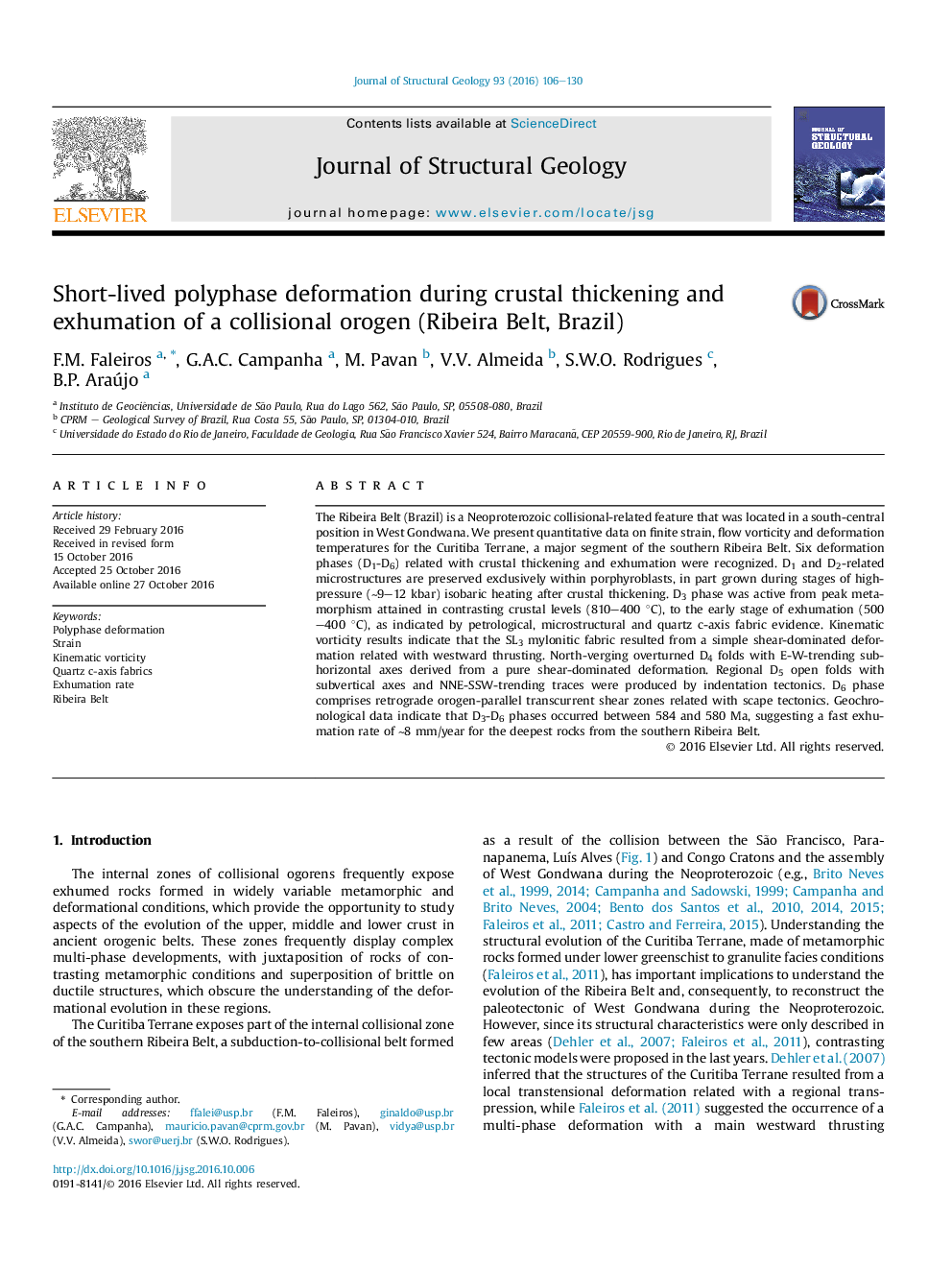| Article ID | Journal | Published Year | Pages | File Type |
|---|---|---|---|---|
| 4732911 | Journal of Structural Geology | 2016 | 25 Pages |
Abstract
The Ribeira Belt (Brazil) is a Neoproterozoic collisional-related feature that was located in a south-central position in West Gondwana. We present quantitative data on finite strain, flow vorticity and deformation temperatures for the Curitiba Terrane, a major segment of the southern Ribeira Belt. Six deformation phases (D1-D6) related with crustal thickening and exhumation were recognized. D1 and D2-related microstructures are preserved exclusively within porphyroblasts, in part grown during stages of high-pressure (â¼9-12 kbar) isobaric heating after crustal thickening. D3 phase was active from peak metamorphism attained in contrasting crustal levels (810-400 °C), to the early stage of exhumation (500-400 °C), as indicated by petrological, microstructural and quartz c-axis fabric evidence. Kinematic vorticity results indicate that the SL3 mylonitic fabric resulted from a simple shear-dominated deformation related with westward thrusting. North-verging overturned D4 folds with E-W-trending subhorizontal axes derived from a pure shear-dominated deformation. Regional D5 open folds with subvertical axes and NNE-SSW-trending traces were produced by indentation tectonics. D6 phase comprises retrograde orogen-parallel transcurrent shear zones related with scape tectonics. Geochronological data indicate that D3-D6 phases occurred between 584 and 580 Ma, suggesting a fast exhumation rate of â¼8 mm/year for the deepest rocks from the southern Ribeira Belt.
Keywords
Related Topics
Physical Sciences and Engineering
Earth and Planetary Sciences
Geology
Authors
F.M. Faleiros, G.A.C. Campanha, M. Pavan, V.V. Almeida, S.W.O. Rodrigues, B.P. Araújo,
